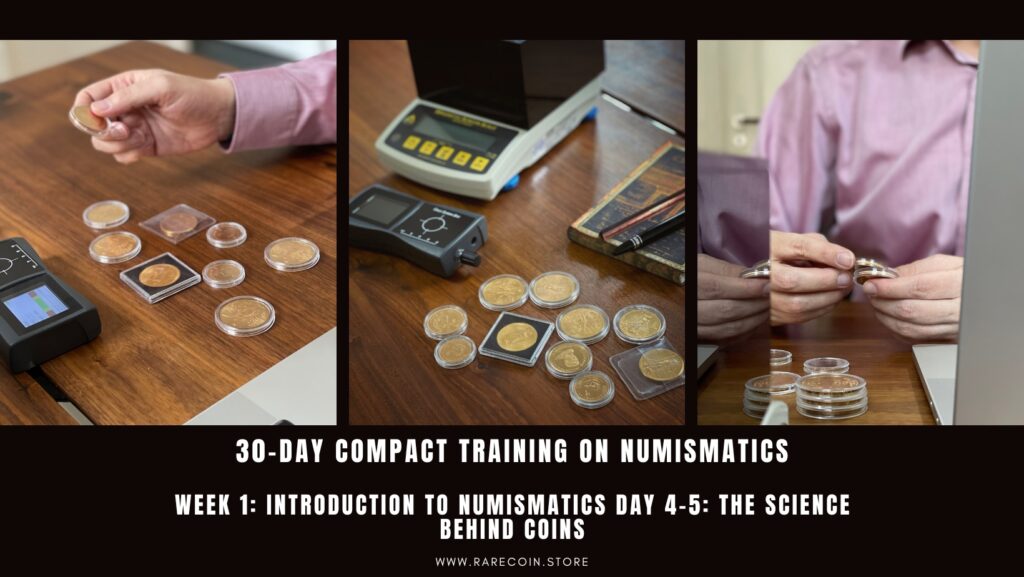
Day 4-5: The Science Behind Coins
- Coin anatomy and terminology (e.g., obverse, reverse, edge, mintmark)
- Coin production: Mints, dies, and coining processes
Numismatics, at its core, is much more than just collecting coins—it’s understanding the rich tapestry of history, art, economics, and of course, the science that underpins every coin. Modern numismatics has a unique allure because it combines the age-old fascination with coins with current technological advancements and methodologies in coin production. Let’s delve deeper into this intricate world by looking at the anatomy of coins and the intricate processes behind their creation.
Coin Anatomy and Terminology
- Obverse: Often referred to as the “head” or “front” of a coin, the obverse typically displays an emblematic design, portrait, or symbol representing the issuing entity. For many modern coins, this might include national symbols or portraits of important figures.
- Reverse: The reverse, or “tail,” of the coin generally showcases a unique design or depiction that can be commemorative, symbolic, or thematic. For instance, many countries feature their national symbols or historically significant events on the reverse.
- Edge: This is the side or “third surface” of a coin. It can be smooth, reeded (with grooves), lettered, or even decorated. The choice of edge type can enhance the coin’s security or aesthetic appeal.
- Mintmark: A mintmark is a small letter or symbol on a coin that indicates where it was produced. Modern mints often use mintmarks to denote coins produced in different facilities or to signify special editions.
Coin Production: From Mints to Final Coins
- Mints: These are specialized facilities where coins are produced. Mints can be governmental or private entities, and their primary role is to manufacture coins for circulation, commemorative purposes, or bullion investment. Modern mints are highly secured and employ cutting-edge technologies to ensure precision, authenticity, and high-quality production.
- Dies: In coin production, a die is an engraved or stamped piece of metal used to strike design features onto coin blanks. A pair of dies (for obverse and reverse) is used in a coin press to imprint the designs onto the coin. With advancing technology, dies today are crafted with meticulous detail, ensuring each coin’s design is sharp, clear, and consistent.
- Coining Processes: Modern coining processes have evolved significantly. The journey starts with choosing the right metal or alloy composition. Once the material is selected, it’s rolled into sheets and then punched to create coin blanks, also known as planchets. These blanks undergo a series of pre-treatments, including annealing (softening by heating) and cleaning. The prepared blanks are then struck by dies inside a coin press, imprinting them with the obverse and reverse designs. Post-striking, the coins might be inspected, counted, and bagged, ready for distribution or sale.
In summary, the world of modern numismatics marries the timeless allure of coin collecting with advanced scientific methods and technologies. By understanding the intricate details of coin anatomy and the sophisticated processes behind their creation, collectors and enthusiasts can further appreciate the artistry and precision inherent in each piece. Whether you’re a seasoned numismatist or a budding enthusiast, grasping the science behind coins enriches the collecting experience, turning every coin examination into a journey of discovery.
Might be interesting:
How to read a coin – Components of a coin: obverse, reverse, edge, inscriptions and designs
Quick Guide – An insight into the world of general coin terms: from rare coins to numismatics

